© 2025 ALLCITY Network Inc.
All rights reserved.

Entering his sixth season with the team, Diamondbacks general manager Mike Hazen has dished out major league contracts to 24 free agents for a total of just over $204 million.
That’s $2 million less than the team spent on Zack Greinke the year before Hazen’s arrival, but the Greinke deal was an exception. The D-backs may never give that kind of money to one player again. They would rather distribute their resources across the roster, hoping to plug as many holes as they can. Unfortunately, Hazen seems to run out of resources faster than he runs out of holes.
Running a small-budget team means more is at stake when the D-backs spend in free agency. The D-backs’ margin for error is small compared to most of their National League West counterparts.
The table below lists all 24 players that Hazen has signed, along with the length and value of their contracts, and a few other metrics.
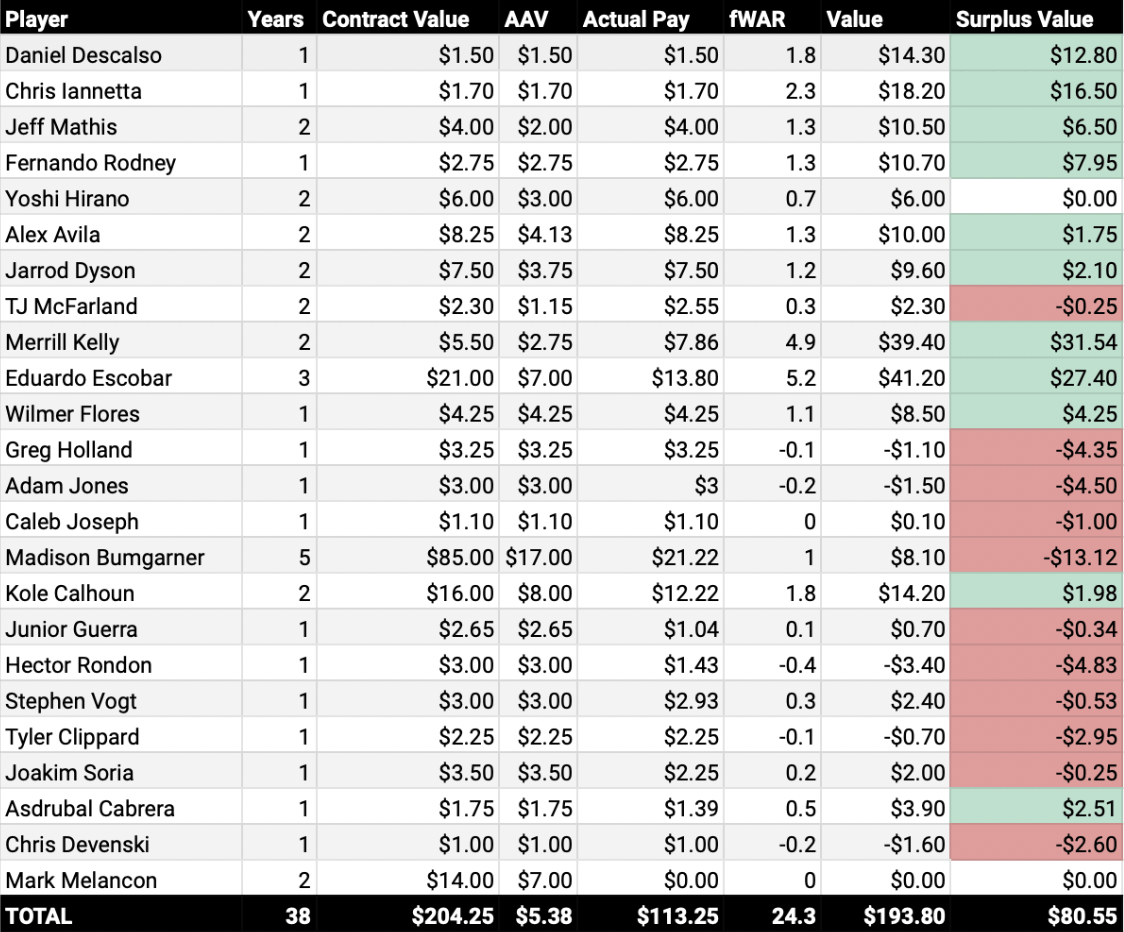
First, a few important definitions:
- Actual Pay: This is the portion of the contract that the team has paid to date. It factors in trades, the abbreviated 2020 season in which players made about 37 percent of their usual salaries, and other details such as options, buyouts and bonuses.
- fWAR: FanGraphs’ wins above replacement metric, which you can read more about here.
- Value: Also from FanGraphs, this is a monetary estimate of a player’s on-field value based on fWAR.
- Surplus Value: As discussed briefly in my recent article about Merrill Kelly, surplus value is the monetary value that a player produced above his salary. For example, if a player’s performance in a given season is determined to be worth $8 million and his salary was $5 million, that player’s surplus value would be $3 million. While major league teams undoubtedly use their own in-house metrics to evaluate players, the concept of surplus value is integral to how major league teams make decisions.
Before we start, it’s important to note metrics such as surplus value don’t give an all-encompassing measurement of player value. MLB players are human beings, and it is both dangerous and impossible to quantify their value with a dollar figure, particularly when that dollar figure is based on an imperfect stat like fWAR.
That said, metrics such as surplus value help us better understand how well the Diamondbacks are using their resources. Here are a few takeaways.
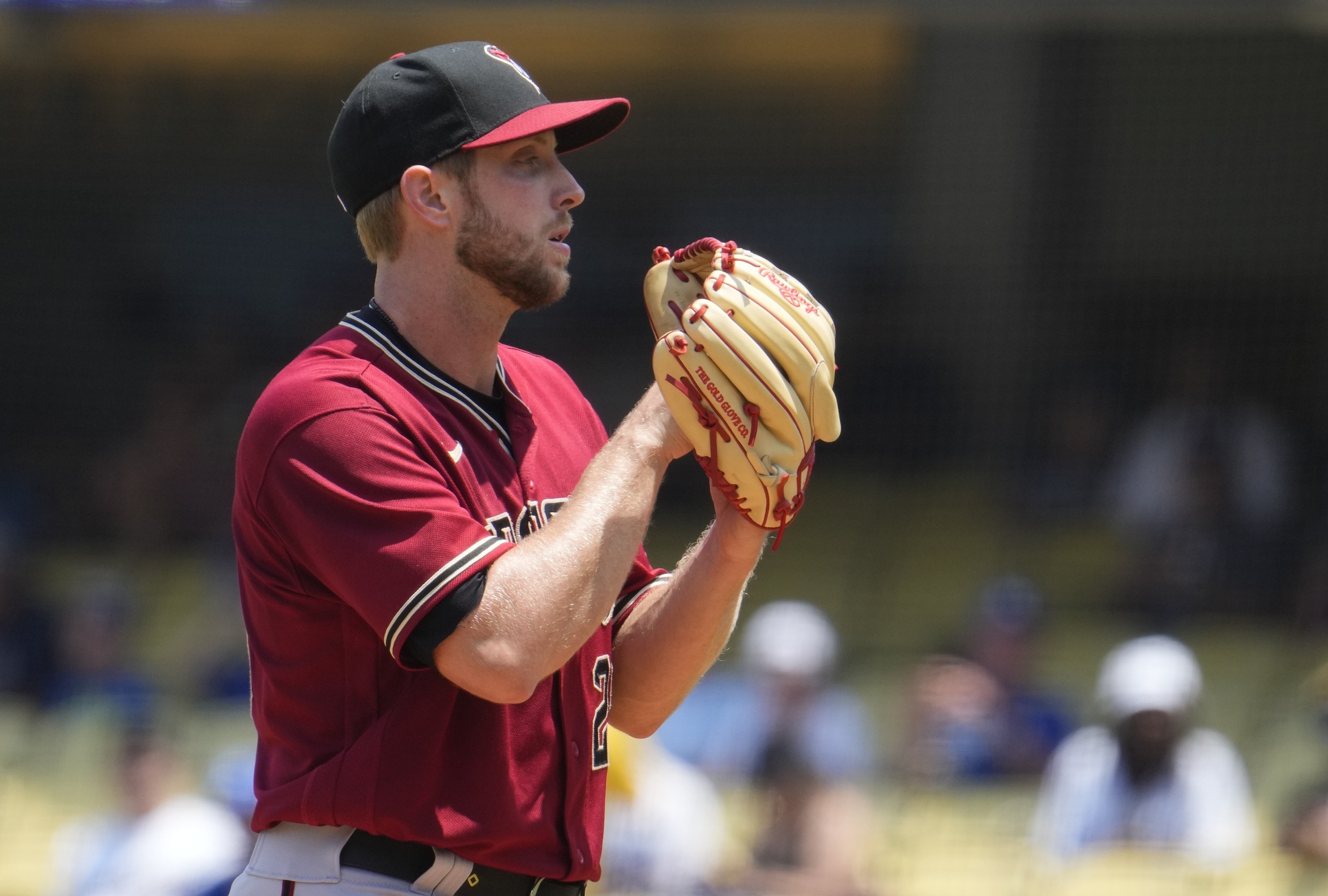
Two above the rest
It’s not hard to see that Kelly and Eduardo Escobar are the team’s best investments since Hazen took over. Kelly was arguably the team’s best starting pitcher in 2021. With the D-backs recently picking up his 2022 club option, Kelly’s surplus value will only continue to rise. He’s the best free-agent signing of Mike Hazen’s tenure.
The Escobar deal may not seem like a free-agent signing since he was on the team for the latter half of 2018. However, the D-backs technically didn’t bring him back until after his deal expired in 2018, hence his appearance on this list.
Escobar slashed .269/.320/.511 with 35 homers and 118 RBIs in 2019. After a down-year in 2020, Escobar found himself again in 2021 and was the team’s lone All-Star representative. The D-backs traded Escobar to the Brewers shortly thereafter.
Despite spending just one year in Arizona, both Daniel Descalso and Chris Iannetta produced surplus values over $10 million in 2017. It’s no coincidence that’s also the last year the team appeared in the postseason.
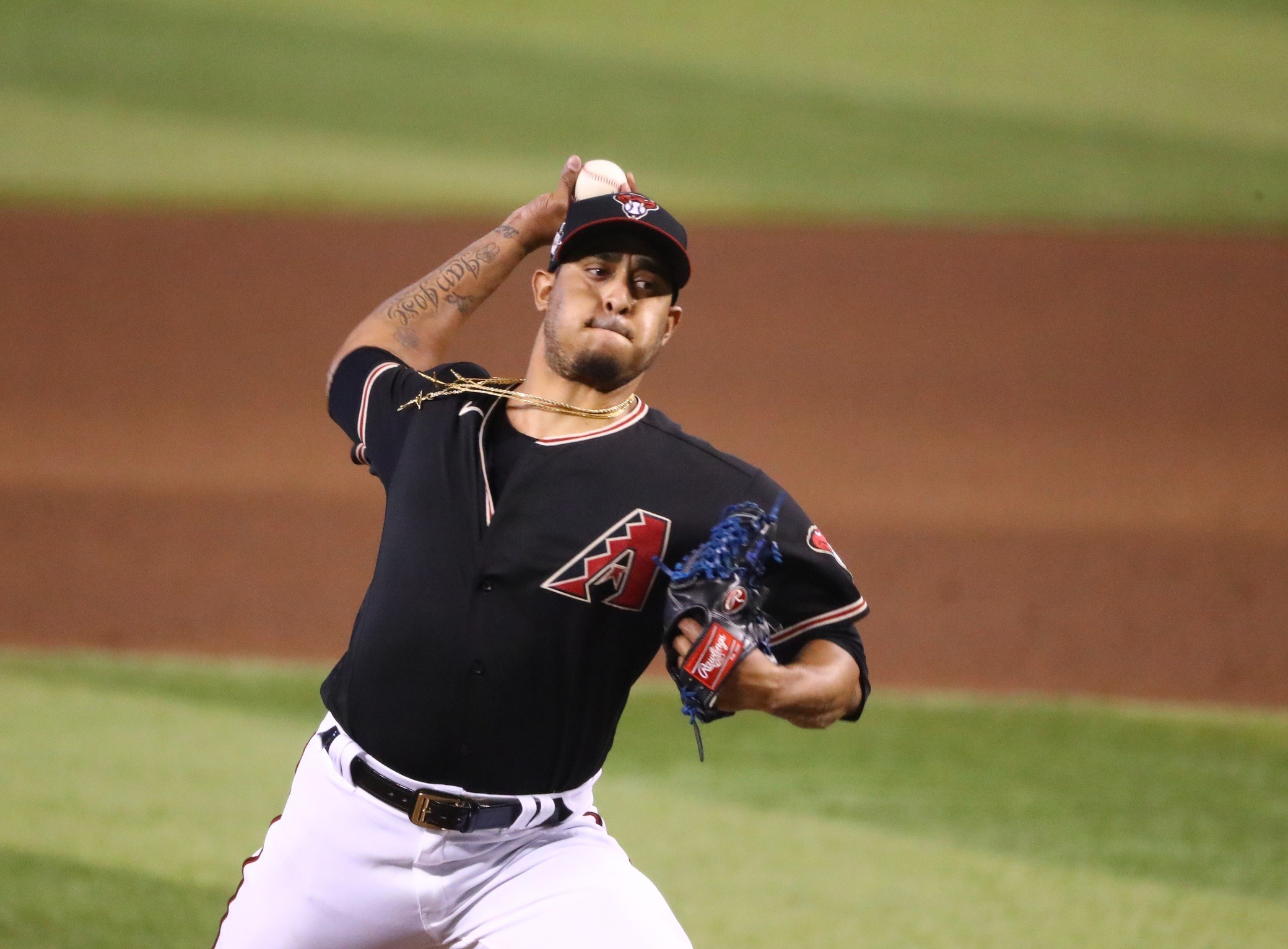
A recent drought
Since 2019, only two Diamondbacks free-agent signees have produced positive surplus values: Kole Calhoun and Asdrubal Cabrera. Neither did so by a particularly wide margin, with Calhoun providing $1.98 million of surplus value and Cabrera providing $2.51 million.
From a fan’s perspective, it may be surprising that either of these players outperformed their contracts, with each spending significant time on the injured list in 2021.
Calhoun’s 1.8 fWAR came entirely in 2020, when he slashed .226/.338/.526 with 16 homers and 40 RBIs in 54 games. He was exactly replacement level in 2021.
Cabrera wasn’t great either in 2021, but he only made $1.39 million before being claimed off waivers by the Cincinnati Reds. His .244/.324/.392 line with seven homers, 40 RBIs and adequate third-base defense over 90 games was worth that and more.
All other D-backs free-agent signees over the past two years have underperformed their contracts. Fortunately for the team, most of those deals only lasted a year and won’t jeopardize the long-term outlook for the team — except one.

The Madison Bumgarner contract
Bumgarner took a big step forward this past season. His velocity ticked up, and he looked similar to the pitcher he was in San Francisco, albeit with less consistency. However, the fact that he posted just 1.5 fWAR in 2021 doesn’t exactly inspire confidence.
Bumgarner is due to make $60 million over the next three seasons. He would need to average about three fWAR per year to have a net-zero surplus value when his contract expires. Bumgarner hasn’t posted a three-win season since his last year in San Francisco, and he’s posted just 1.0 fWAR total since joining the D-backs.
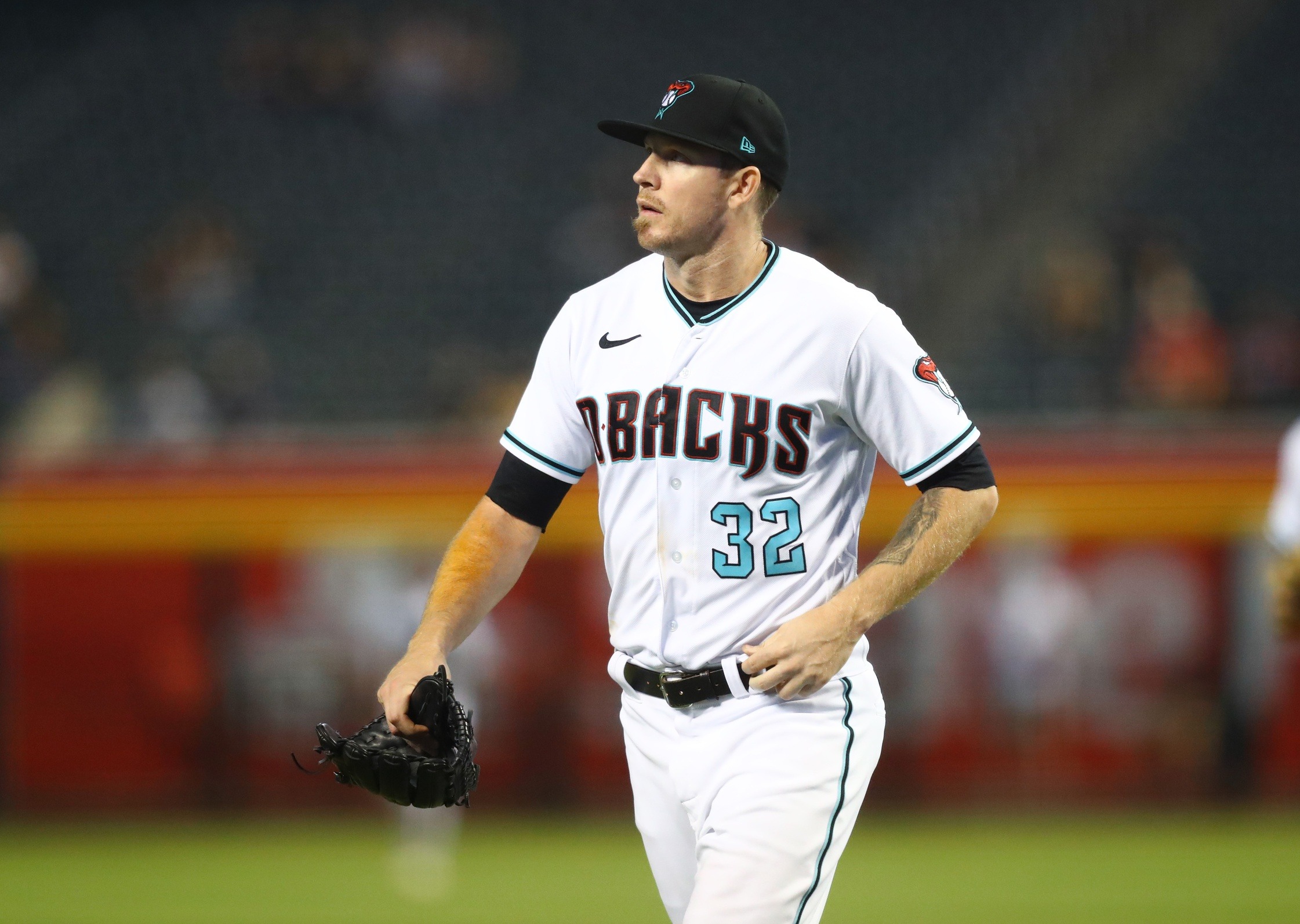
Bullpen problems
It’s no secret that the D-backs have had bullpen problems for a long time. They have struggled to develop relievers internally, which has led to a heavy reliance on free agency to supply their bullpen talent. That hasn’t gone well.
Let’s look again at the table, but now just the relievers.
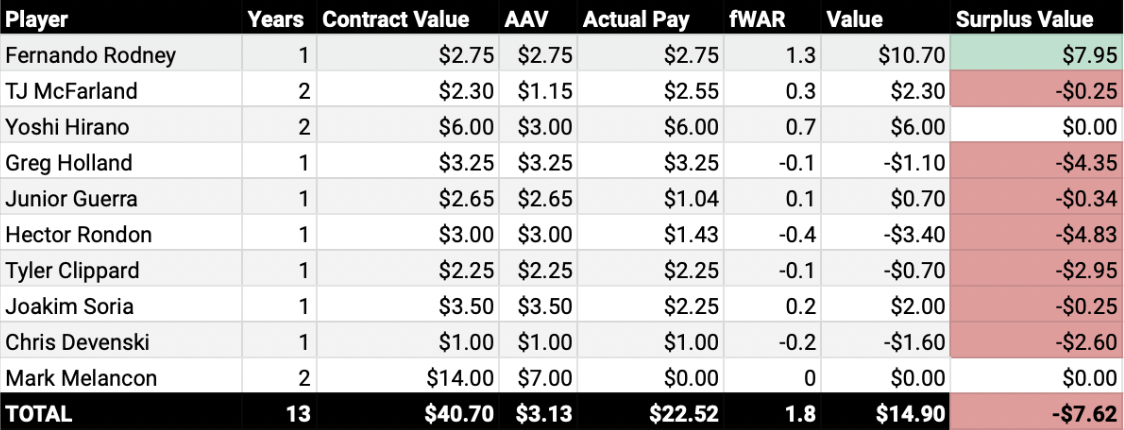
Since taking over in 2016, Hazen has signed 10 free-agent relievers to major league contracts. Those relievers have combined for just 1.8 fWAR, 1.3 of which came from Fernando Rodney in 2017. Only Rodney has posted a positive surplus value, with Yoshi Hirano breaking even.
Granted, with such small sample sizes, fWAR is particularly limited in evaluating relievers. Let’s look at some more traditional pitching metrics.
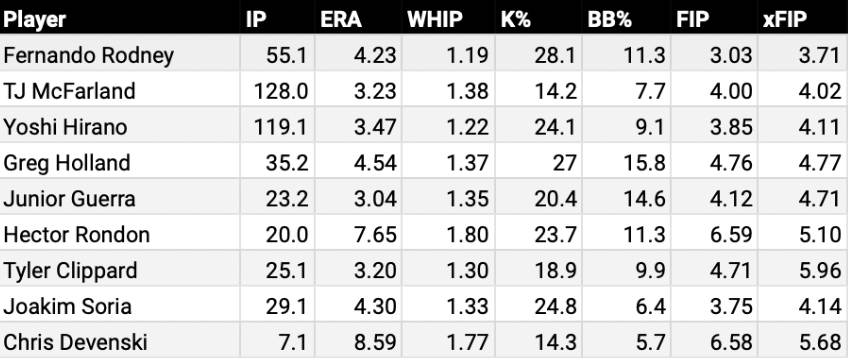
The numbers may look a little better here, but the results are still uninspiring.
Those players signed for a combined $26.4 million, which works out to an average annual salary of $2.4 million per year. That’s not going to go far in the bullpen market, but the D-backs still haven’t gotten their money’s worth.
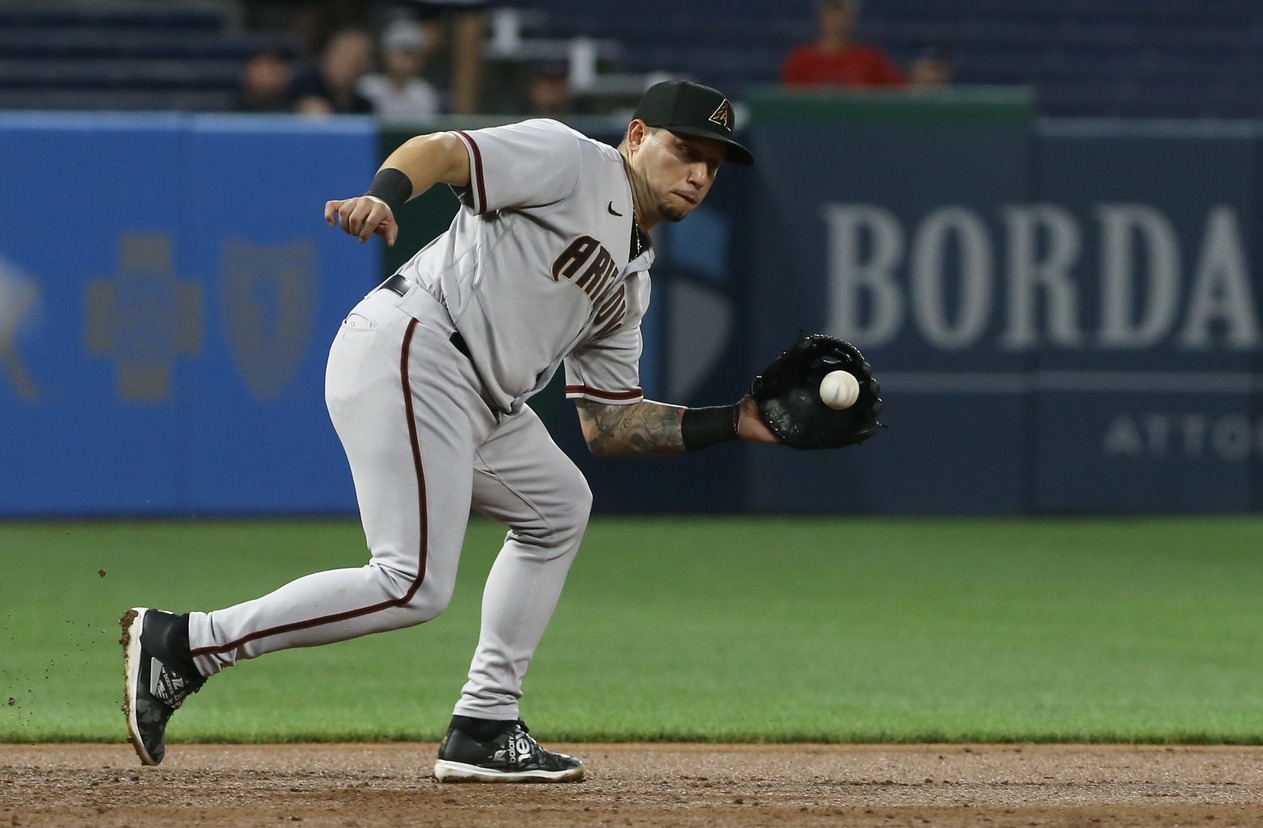
Success with role players
While the team has struggled signing bullpen arms, the D-backs have had much more success finding role players in free agency.
Let’s look again at the table, keying in on that group.
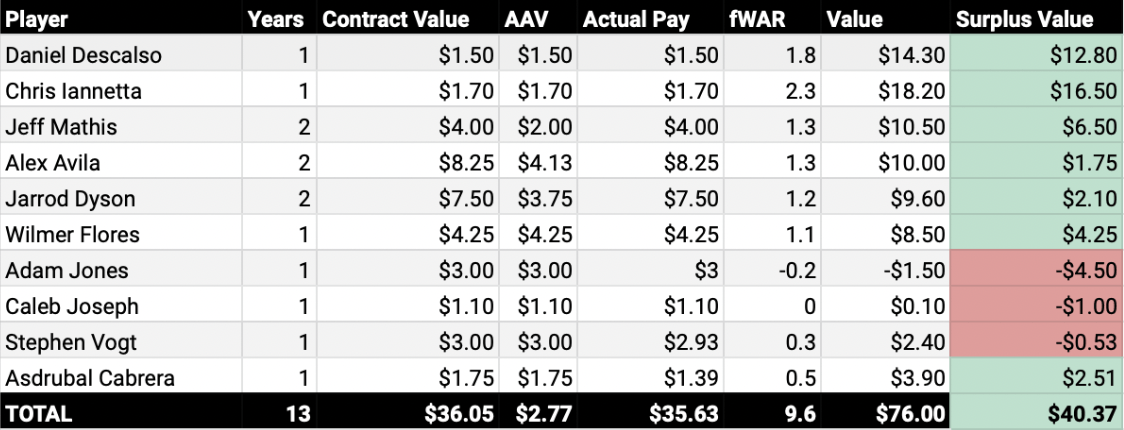
As mentioned earlier, the team found a pair of gems in Descalso and Iannetta in 2017. Jeff Mathis was an excellent catcher for two seasons. Wilmer Flores had a great season offensively in 2019.
In total, the D-backs spent about $36 million on these players and received $76 million of value in return. That translates to a surplus value of more than $40 million.
Final conclusions
On the whole, Hazen’s performance in the free-agent market has been just okay since his arrival. Role players have excelled, relievers have struggled and Bumgarner may be more of a hindrance than a help over the next three years.
Overall, Hazen has had relatively little to work with, and the combined surplus value of all his signings ($80.55 million) is a net-positive. That means the D-backs have, on average, paid less than the going rate for one fWAR in free agency. While that’s a good sign, it doesn’t mean much for a team that can’t afford to pay what other teams do.
As a small-market team, the D-backs’ success hinges on their ability to do more with less money. Hazen has technically done that overall, but not with enough consistency to put a competitive team on the field, year after year.
Ultimately, free agency is a secondary pursuit for the D-backs. Their ability to succeed will always rely first and foremost on their ability to draft and develop the talent that they already have. Until they prove they can do that, free agency is nothing more than a Band-Aid on a bullet wound.
Follow Jesse Friedman on Twitter
Get Arizona's Best Sports Content In Your Inbox!Become a smarter Arizona sports fan with the latest game recaps, analysis and exclusive content from PHNX's writers and podcasters!
Just drop your email below!
Comments
Share your thoughts
Join the conversation



